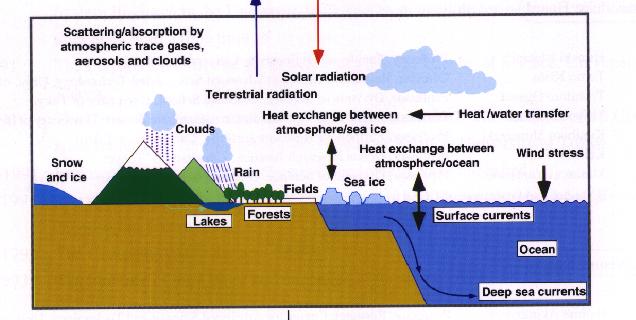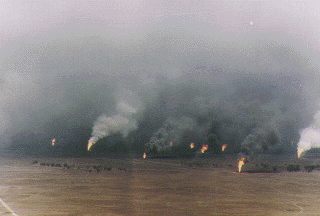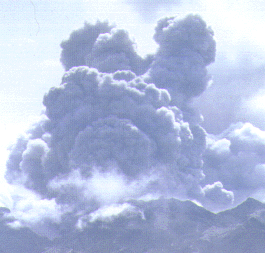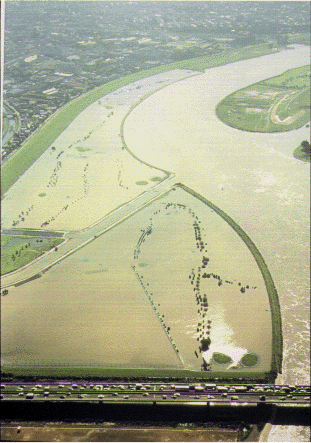The main task of our Center is to build climate models and to study the climate system by means of numerical experiments using these models. What is this "climate system" we study? Our environment is made up of rapidly changing physical phenomena such as winds, temperatures, humidity, rain and snow. The climate can be viewed as the "average" behavior of this environment. The average, however, can change from year to year, decade to decade, century to century. The climate system can be viewed as the totality of interacting subsystems such as the atmosphere, oceans, land surfaces, and so on whose combined behavior determines the climate. To study the climate by climate modeling, we construct numerical models to simulate each subsystem based on physical laws and guided by observational data. The climate model is composed of interacting sub-models; atmospheric, ocean, land surface models, and so on. Supercomputers can simulate the physical quantities such as wind fields, temperature fields, rainfall amounts, snow amounts and ocean currents with which we describe the climate system. The model is improved by comparing the simulated results with observational data. In this way, we make progress in our understanding of the climate system by continuous exchange of information between the real and model worlds.

Large scale and persistent changes occur in the various physical phenomena in our earth's climate system, which we can call climate changes.

The emission of pollutants due to human activities cannot be ignored any longer even on a global scale. There is, for example, a danger of global warming which might be caused by increasing carbon dioxide and methane. (Photo: Oil well fire in the 1991 Persian Gulf war)

It is becoming increasingly evident, from recent large volcanic eruptions,that stratospheric aerosols of volcanic origin cause significant climate change. (Photo: Volcanic plume of Mt. Pinatubo, PPS Co.)

Water is a very important substance for the climate system, forming clouds,carrying heat energy as well. Significant changes in water distribution accompany climate change. (Photo: Flood of the Arakawa River caused by a typhoon 11, 1993, Asahi Shinbun Co.)
It is not an easy task to determine causes and effects among these phenomena with our present knowledge. Our goal is to accomplish this by simulating these phenomena with extensive numerical modeling. It will thereby become possible, for example, to simulate the climate change caused by projected CO2 increases. We believe that it is urgent to understand the dynamics of the climate system and to be able to simulate past, present and future changes in our climate.